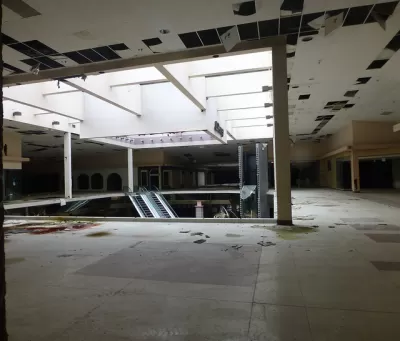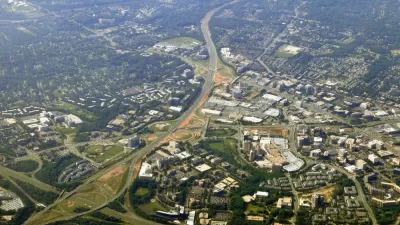More online shopping means fewer consumers are spending money at brick-and-mortar stores, with suburban malls hit especially hard. But municipalities are looking for creative strategies to navigate a post-mall world.

Gregory Scruggs writes about changing consumer trends and the impact on municipalities. "Over the past two decades, consumers nationwide have made significant shifts in their shopping habits, migrating to online retail and returning to traditional commercial corridors and shopping districts in economically strong metro areas."
The result has been more struggling suburban malls with high vacancy rates or properties that have shut down altogether. This in turn means lower property assessments and decreases in property tax funding for local communities. For municipalities that depend largely on commercial property taxes, the effects of flagging malls can be substantial.
But, says Scruggs, communities are planning ahead in anticipation of a long-term shift away from traditional malls. Municipalities are investing in housing and retail in downtowns to make up for the tax revenue that used to come from suburban malls. Others are looking to the redevelopment of mall properties as a way to diversify and transform these spaces.
Scruggs reviews examples of various municipalities around the country that are working to adjust and adapt to changing retail landscapes. "Such a radical change from the mall as an exclusively retail environment may conflict with land use policy. Instead of serving as an obstacle to this transition, local government can seize the reins to help secure an economically vibrant future."
FULL STORY: The Unmalling of America

Planetizen Federal Action Tracker
A weekly monitor of how Trump’s orders and actions are impacting planners and planning in America.

Maui's Vacation Rental Debate Turns Ugly
Verbal attacks, misinformation campaigns and fistfights plague a high-stakes debate to convert thousands of vacation rentals into long-term housing.

San Francisco Suspends Traffic Calming Amidst Record Deaths
Citing “a challenging fiscal landscape,” the city will cease the program on the heels of 42 traffic deaths, including 24 pedestrians.

Defunct Pittsburgh Power Plant to Become Residential Tower
A decommissioned steam heat plant will be redeveloped into almost 100 affordable housing units.

Trump Prompts Restructuring of Transportation Research Board in “Unprecedented Overreach”
The TRB has eliminated more than half of its committees including those focused on climate, equity, and cities.

Amtrak Rolls Out New Orleans to Alabama “Mardi Gras” Train
The new service will operate morning and evening departures between Mobile and New Orleans.
Urban Design for Planners 1: Software Tools
This six-course series explores essential urban design concepts using open source software and equips planners with the tools they need to participate fully in the urban design process.
Planning for Universal Design
Learn the tools for implementing Universal Design in planning regulations.
Heyer Gruel & Associates PA
JM Goldson LLC
Custer County Colorado
City of Camden Redevelopment Agency
City of Astoria
Transportation Research & Education Center (TREC) at Portland State University
Jefferson Parish Government
Camden Redevelopment Agency
City of Claremont





























